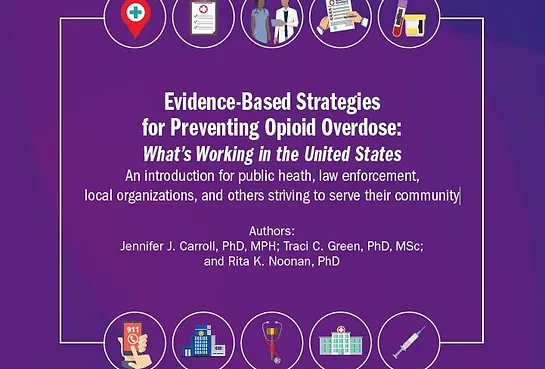Strategy Selection Resources

Strategy for Preventing Opioid Use Disorders in Communities.
Effective programs shown to prevent teens from developing SUDs work within community environments to strengthen cognitive control over emotional and impulsive reactions, foster healthy relationships, teach effective ways of managing stress, reduce traumatic experiences, and provide nurturing settings for healthy development. One of the most effective prevention approaches involves the implementation of early intervention strategies that prevent problems from occurring or tackles them head-on when they do appear before problems worsen. It works by identifying and providing early supports and programs to children and adolescents who are at risk of a variety of poor outcomes that tend to be related to one another; e.g., substance misuse, delinquency, school drop-out, depression, and other behavioral problems. Implementing these programs well can yield significantly more benefits than costs. Taxpayers benefit when investments are made in these successful research-based programs rather than waiting and reacting to already serious substance use problems that are much more difficult and costly to address.
Selecting Best-Fit Programs and Practices: Guidance for Substance Misuse Prevention Practitioners.
To successfully address Substance misuse and related behavioral health problems it is necessary to have information about the effectiveness of available programs and practices. Determining which options have the greatest potential to work well in unique settings and how to proceed if no viable options are available is also important. This resource from the Substance Abuse and Mental Health Services Administration (SAMHSA) has developed this guidance document, Selecting Best-Fit Programs and Practices: Guidance for Substance Misuse Prevention Practitioners, to meet these needs.


Center for Substance Abuse Prevention. Identifying and Selecting Evidence-Based Interventions Revised Guidance Document for the Strategic Prevention Framework State Incentive Grant Program.
The purpose of this guidance is to assist State and community planners in applying the Substance Abuse and Mental Health Services Administration’s (SAMHSA’s) Strategic Prevention Framework (SPF) to identify and select evidence-based interventions that address local needs and reduce substance abuse problems. This document describes the Strategic Prevention Framework and promotes implementing evidence-based practices for prevention in communities across the country.
CDC Evidence-Based Strategies for Preventing Opioid Overdose
This document is to assist community leaders,local and regional organizers, non-profit groups, law enforcement, public health, and members of the public in understanding and navigating effective strategies to prevent opioid overdose in their community. The CDC also held a webinar on using the document and reviewing it’s contents. The webinar recording can be found here.


Prehospital Evidence – Based Guidance
EMS care has evolve from a system largely based on tradition and best practice to one with a growing evidence base supporting procedures and protocols.








